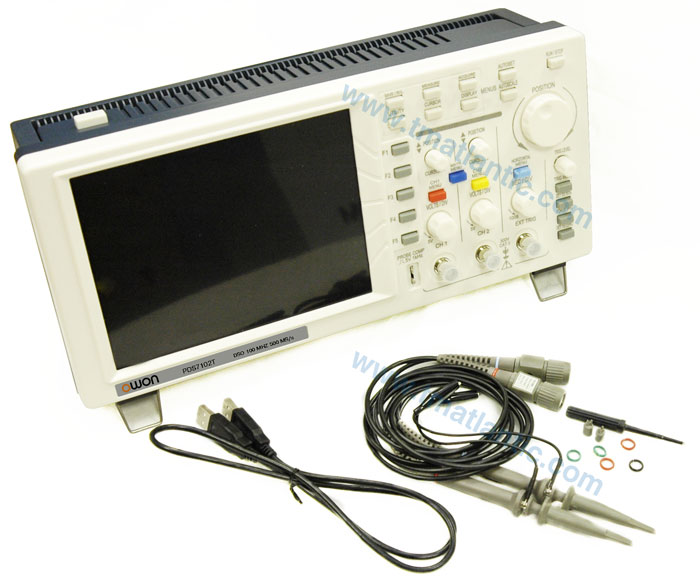Hacking the OWON SDS7102 Scope May 1, 2016 A few years ago I bought myself an. The specifications for the scope are rather nice: decent bandwidth and sampling rates, a large bright display, a battery option and lots of connectivity such as a USB host, USB device and Ethernet. The scope is pretty crappy in some ways though. The analog section is fairly noisy so don’t expect to see any details for signals below 1mV at X10 attenuation. The firmware is a bit buggy and some things just don’t work.

Trying to save images to a USB memory hangs until the USB memory is unplugged. Trying to talk to the scope over ethernet crashes the scope. The menu system is a bit messy.
(I know, the reason the USB memories won’t work is that the sector size is wrong. I’d still consider that a big wart since there are no error messages and this information isn’t that easy to find.) Still, it has been very useful. I have a much fancier, and of course much more expensive, Hameg scope at the office. The Hameg has a better analog section, the noise is noticeably lower than with the OWON, it has a higher sampling rate, can decode a bunch of different protocols, has a logic analyzer, and has more math functions than I can shake a soldering iron at and is just better in so many ways. It’s a solid piece of German engineering. But engineers aren’t always that good at user interfaces so it’s also a bit clunky to use. Usually when I need an oscilloscope it’s because I’m looking at something like an I2C bus or a SPI bus and for that it doesn’t really matter if the measurements are a bit noisy down a 10mV and I don’t need that high sampling rates.
Jun 29, 2016 - Christer Weinigel did a teardown of OWON SDS7102 oscilloscope. Tancuyuschij medvedj dlya winamp 7. Feel free to reach him for feedback, random tips or just to say hello:-).
The large display and the fact that the all the knobs and buttons are in the natural places makes the OWON really nice to use. The OWON also fits perfectly in an old laptop bag I have, and since it cheap enough that I’m not too worried about breaking when I’m carrying it around. If I were to break it I can afford a new one. Being able to run the scope off the battery is also a real plus in some situations. Despite all its fault the OWON has somehow ended up being up the scope I use most of the time. The “hacking” part One of the reasons I bought this specific scope was that I had seen some teardowns of it and knew that the scope has a Samsung System-on-Chip (SoC) and a Spartan 6 FPGA in it and I have some familiarity with both. At the back of my head I had the idea that I might be able to reverse engineer the scope and do something interesting with it.
Two years after buying the scope I still hadn’t done anything like that with it though. But about a week ago I finally decided to do something. A word of warning here. This is probably going to be yet another project where I start, spend some time on it and then lose interest, so there’s a big risk that I won’t reach my goal. But the road there might be interesting anyway. What is reverse engineering?
Figuring out how something like this works is called “reverse engineering”, the idea is that you are looking at a finished product that someone has build and you are trying to reverse the engineering process that went into designing the thing. There is a huge thread discussing the and other people has done quite a bit of reverse engineering of it already. They have mostly concentrated on the analog parts and I’m more interested in the digital parts and the firmware. Disassembling the scope Where to start?
Blog
- Nokia Xpress Browser Free Download For Nokia 206
- Cambam Crack Keygen Patch
- After Effects Cc Light Sweep Plugin Alliance
- Cm 01 02 Original Database
- Total Training For Microsoft Wpf Essentials Torrent Download
- Ramka Dlya Chertezha A1 Avtokad
- Suara Walet Thailand Mp3 Download
- Display Resolution Manager Serial
- Bluetooth Usb Adapter Es 388 V20 Driver Free Download
- Easeus Todo Backup Portable Drive